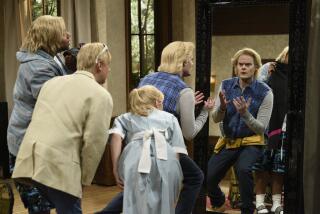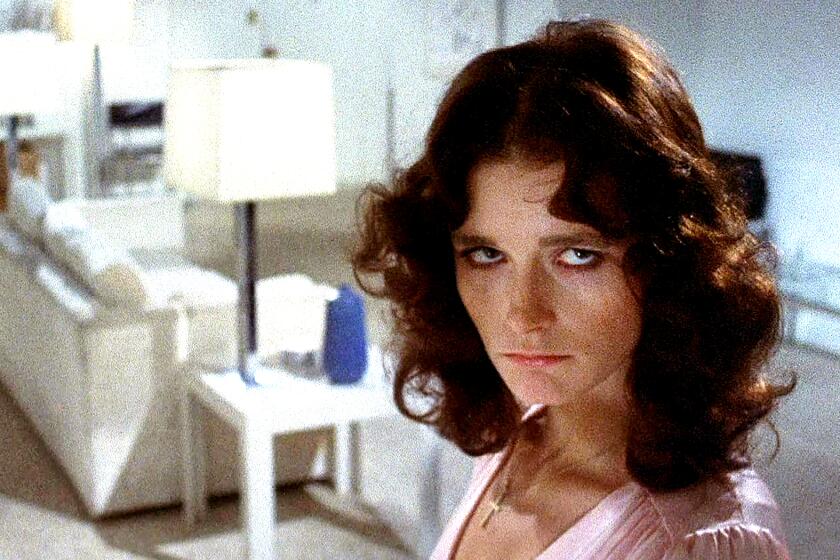5 writers on how Charlie Brown and the ‘Peanuts’ gang changed their lives
For Americans who came of age in the 1960s and ’70s, Charles Schulz’s comic strip “Peanuts” was a pervasive cultural presence.
The strip appeared in newspapers nationwide, and Schulz’s quartet of main characters — Charlie Brown, Lucy, Linus and Snoopy — in some ways were the graphic equivalent of the Beatles. They were so popular that when the animated TV special “A Charlie Brown Christmas” first aired in December 1965, nearly half of the nation’s sets in use that night were tuned in.
But “Peanuts,” like the Beatles’ music, was far more than mere entertainment, as we’re reminded in an intriguing new anthology, “The Peanuts Papers: Writers and Cartoonists on Charlie Brown, Snoopy & the Gang, and the Meaning of Life.”
Nearly three dozen novelists, memoirists, cartoonists, critics and journalists describe the influence that Schulz’s daily cartoon about the indignities and joys of suburban childhood had upon their own lives and work.
“Here on the tiniest of stages we find illuminated the ongoing human business of friendship and love, anger and frustration, fantasy and heartache — and pretty much everything else,” anthology editor Andrew Blauner writes in the preface.
Here are five contributors’ takes on how “Peanuts” shaped their way of looking at the world.
Ann Patchett
“To the Doghouse”: The author of eight novels, including “The Dutch House,” Ann Patchett spent her summers with her grandparents in Paradise, Calif., where she recalls lying in the grass near the birdbath and avidly reading paperback collections of Schulz’s strips. She steeped herself in Snoopy’s revelry and witticisms rather than study classical languages or weighty authors such as Virginia Woolf. “Even when I was old enough to know better, I was more inclined toward ‘To the Doghouse’ than ‘To the Lighthouse,’” she says in her essay. “I was more beagle than Woolf.”
Snoopy the canine novelist’s joyful insistence on pounding out more manuscripts in the face of rejection also imbued her with needed resilience. “Snoopy taught me that I would be hurt and that I would get over it,” she says.
Kevin Powell
“What Charlie Brown, Snoopy, and Peanuts Meant to Me”: A writer, activist and author of “My Mother. Barack Obama. Donald Trump. And the Last Stand of the Angry White Man,” Kevin Powell describes the impact “Peanuts” TV specials had on him while growing up in an impoverished single-parent household. One particular Schulz gag — Lucy pulling the football away just as Charlie Brown tried to kick it — had a deeply personal meaning. “That image served as a metaphor for my own tough life,” Powell recalls. “How will we ever not be poor? Will we ever be able to leave this ghetto life? Why do I feel so close yet so far from relief, from hope?”
But he says he also found solace in Charlie Brown as a kindred spirit, a fellow sufferer from melancholy “that I related to instinctively.” Years later, when he showed up at a historic African American boarding school in Mississippi to give a speech, Powell was thrilled to discover that Schulz had been a donor and that the girls’ honor dormitory was named after Snoopy.
Rick Moody
“A Charlie Brown Thanksgiving”: The author of the 1994 novel “The Ice Storm” and, most recently, “The Long Accomplishment: A Memoir of Hope and Struggle in Matrimony,” Rick Moody recalls his Long Island childhood in which he read “Peanuts” avidly and wore a sweatshirt emblazoned with an image of Snoopy on a surfboard. He grew up revering the cartoon dog’s “anarchistic cool” and penchant for fantasy, such as imagining himself to be a World War I flying ace. But he says the character he identified with was Charlie Brown, whose awkwardness reminded Moody of his own youthful social ineptitude and mediocrity at sports.
Moody’s affection for “Peanuts” was rekindled in adulthood, when he discovered that his young daughter delighted in watching the “Peanuts” TV specials. Those included 1973’s “A Charlie Brown Thanksgiving” and its 1988 companion piece “The Mayflower Voyagers,” which retells the first Thanksgiving with “Peanuts” characters in supporting roles.
Jonathan Franzen
“Two Ponies”: The author of “The Corrections” and, most recently, “The End of the End of the Earth,” Jonathan Franzen recalls his childhood fascination with the “Peanuts” characters, whom he knew from book-length anthologies rather than the comic strip. (His parents subscribed to the St. Louis Post-Dispatch, which didn’t carry “Peanuts,” instead of the Globe-Democrat, which did.)
While Charlie Brown and the others didn’t much resemble real children to him, “I nevertheless took their stories to be dispatches from a universe of childhood more substantial and convincing than my own.” He admired how they played baseball and football, rather than having to settle for playground kickball, as he and his friends did. Franzen also remembers how “Peanuts” resonated with the 1960s counterculture: “Wouldn’t the country be better off listening to Linus Van Pelt than Robert McNamara?”
Lisa Birnbach
“Lucy Can’t See”: The coauthor of 1980s pop culture sensation “The Official Preppy Handbook,” who now hosts the “Five Things With Lisa Birnbach” podcast, Lisa Birnbach says she gained much-needed confidence from her experience playing the role of Lucy in her school production of “The Wonderful World of Peanuts.” Birnbach, a timid, self-conscious third grader who wore thick-lensed glasses because of her poor vision, identified more with Charlie Brown. Her teacher, however, chose her for the role of the assertive character whom Birnbach calls “the warrior queen of the ‘Peanuts’ tribe.” (As Birnbach explains, Lucy “was feared. She got her way.”)
Birnbach remembers panicking when her teacher informed her that she would have to perform without her glasses, without which she felt helpless. But strangely, once she got onstage, the “visual fog” she experienced was oddly liberating, as was the sound of the audience cheering after she got through the scene without falling down. “I suddenly felt like an 8-year-old cartoon femme fatale,” Birnbach says. After that, “I also decided that I didn’t have to be Charlie Brown my whole life. I could get contact lenses.”
Kiger has written for GQ, Sierra magazine, Fast Company and History.com. He also has cowritten two nonfiction books, “Poplorica” and “Oops.”
More to Read
Sign up for our Book Club newsletter
Get the latest news, events and more from the Los Angeles Times Book Club, and help us get L.A. reading and talking.
You may occasionally receive promotional content from the Los Angeles Times.









